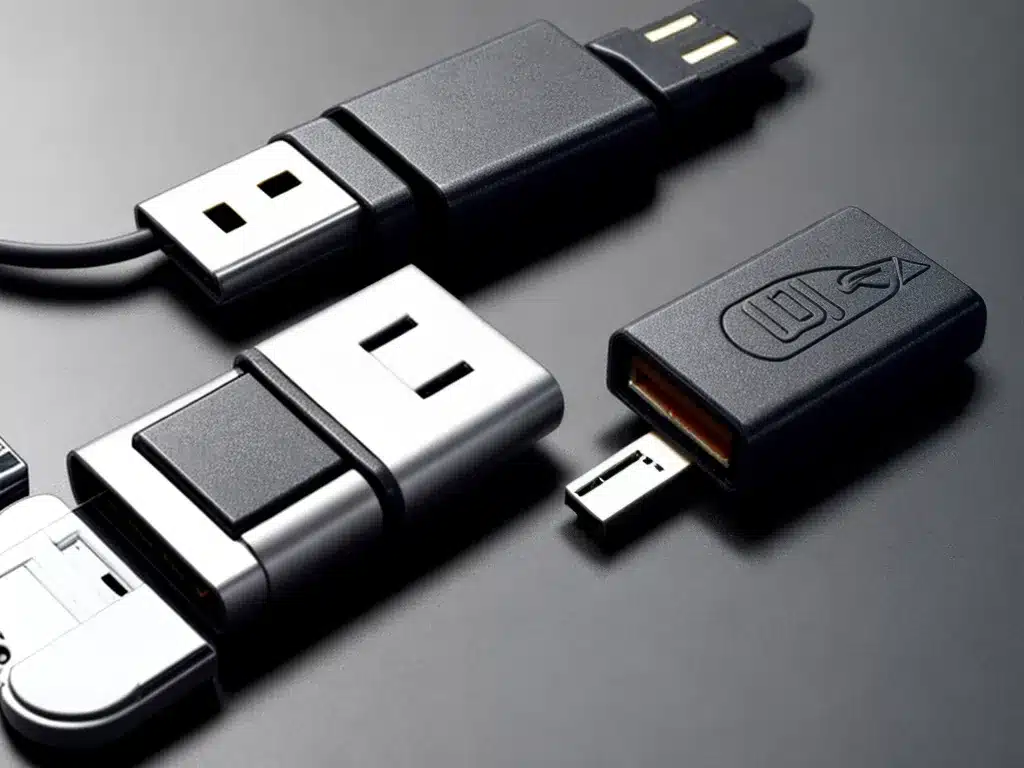
USB flash drives are incredibly convenient for storing and transferring files. However, sometimes a USB drive will suddenly stop showing up on your computer. When this happens, it can be worrying as you may have important files stored on the drive. The good news is that in many cases, you can recover files from a USB flash drive even if it is not being detected. Here are the steps I take to try and recover data from a USB drive that is not showing up.
Troubleshoot the USB Drive Connection
The first thing I do when a USB flash drive stops showing up is some basic troubleshooting of the connection:
-
Try different USB ports on your computer. Connect the USB drive into another USB port to see if it shows up. I find sometimes a particular USB port can stop working properly.
-
Plug the USB drive into another computer. Try plugging the USB drive into a different computer. If it shows up on the second computer, then the issue was likely with the original computer’s USB port.
-
Check for physical damage. Inspect the USB connector and port for any signs of physical damage. Debris in the port or a damaged connector can prevent the USB drive from connecting properly.
-
Update USB drivers. Outdated USB drivers on your computer can sometimes cause connected devices to not be recognized properly. Updating to the latest USB drivers may fix the issue.
If after troubleshooting the USB drive still does not show up, then its likely a problem with the drive itself. The next step is to try data recovery software.
Use Data Recovery Software
When a USB drive is not being detected correctly, data recovery software can often still detect and recover files from it. Here are the steps I take:
-
Install recovery software. I recommend professional recovery programs like Stellar Data Recovery or EaseUS as they have tools specifically for undectable USB drives. The best recovery software is not free but worth paying for in my experience.
-
Connect the USB drive. With the recovery program opened, connect the problematic USB drive to your computer. The recovery software should still be able to detect the USB drive even if your computer does not show it.
-
Scan for recoverable data. Start a scan on the USB drive. The software will comb through the drive looking for recoverable files. This may take some time depending on the size of the drive.
-
Preview and recover files. Once the scan is complete, the software will show recoverable files found. You can preview files to check they are intact. When you find your lost files, select them to recover them to your computer’s hard drive.
With good recovery software, I’ve been able to recover data from USB drives even if the drive itself was fully corrupted or undetectable. Just make sure not to save the recovered files back onto the problematic USB drive.
Send to a Data Recovery Service
If DIY software recovery does not work, then a professional data recovery service may be able to repair and recover data from the USB drive. Here is the process:
-
Find a reputable recovery service. I search for recovery services with strong reviews and high recovery success rates. The cost is usually at least $100+.
-
Ship the USB drive. Package the non-functioning USB drive carefully and ship it to the recovery service. Include details on the specific issue you are having.
-
Wait for analysis. The service will then do an initial analysis of your drive. If your data is recoverable, they will contact you with a quote.
-
Approve quote and payment. If you accept the quote, you’ll pay for the full recovery service. The price varies based on the extent of recovery needed.
-
Receive recovered files. Finally the service will fully repair the drive, recover your data, copy it to new media, and ship it back to you.
Going through a professional data recovery service takes more time and money, but offers the best chance for recovering data if DIY options failed.
Prevent Future USB Drive Failure
Once you’ve recovered your files from the undetectable USB drive, I recommend taking steps to prevent a failure like this in the future:
-
Replace the USB drive. Since the original USB drive failed, it’s best to replace it with a new high quality USB drive to prevent issues reoccurring.
-
Backup your data. Make sure to have a backup of your important files in case a drive fails again. Back them up to cloud storage or an external hard drive.
-
Eject the drive properly. Always use the “Eject” option before unplugging the USB drive to prevent corruption.
-
Avoid physical damage. Be careful not to bend or drop the USB drive which can damage it. Store it in a protective case when not in use.
-
Check the health of your drive. Use the free software CrystalDiskInfo to verify your drive is in good health. At the first sign of issues, replace the drive.
Following these tips should help prevent headaches in the future if another USB drive starts misbehaving. Stay diligent about backing up your data and verifying the health of your drives.
In conclusion, with the right tools and techniques, there is a very good chance of recovering lost files off a USB flash drive even if it is not being detected properly by your computer. First troubleshoot the connection, then use data recovery software and services to retrieve your files. Just be sure to prevent future failure by replacing and properly maintaining USB drives storing important data.












